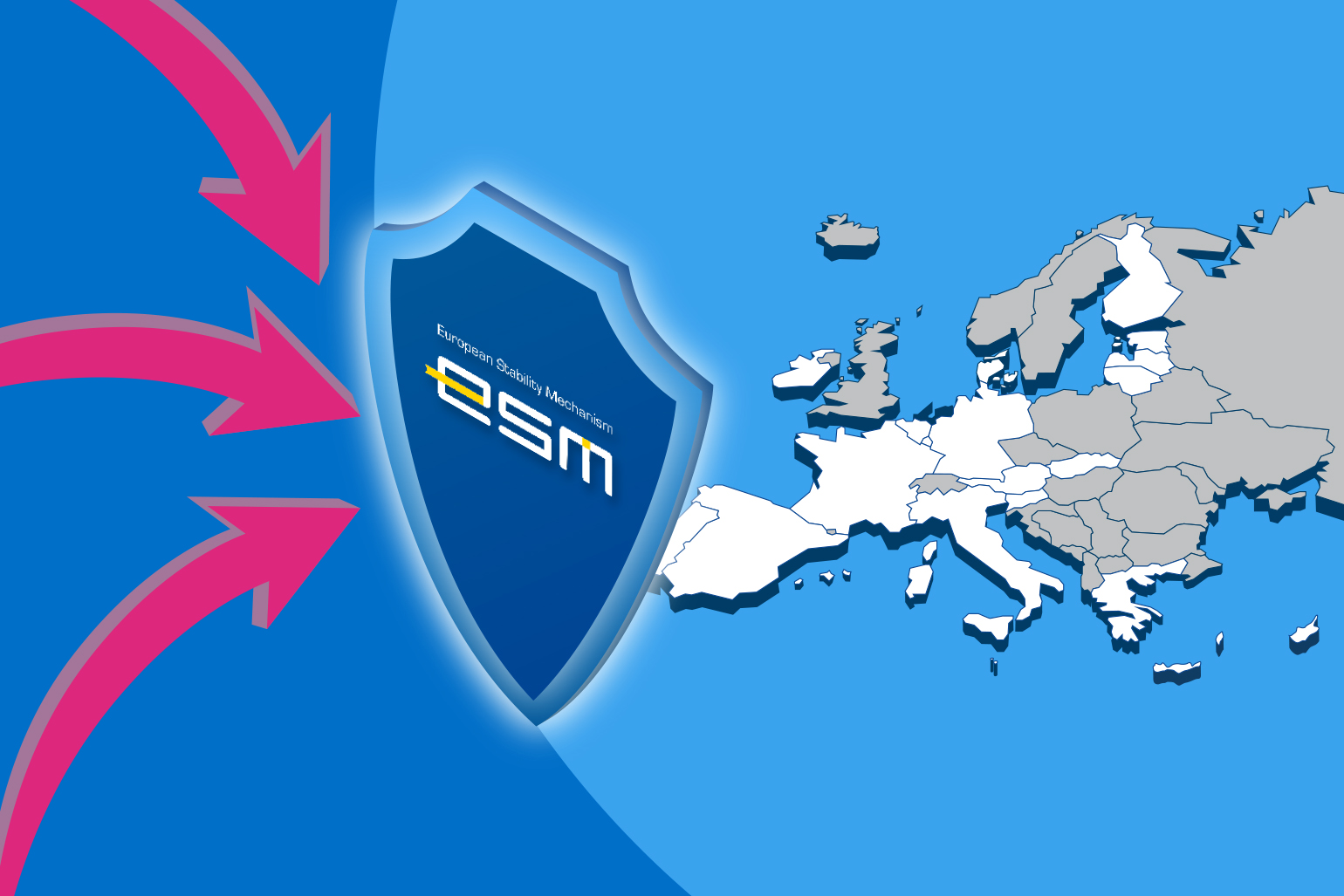ESM reform – healing the euro area’s pandemic scars and beyond

The reform of the European Stability Mechanism (ESM) is a long-standing project. By agreeing to start the formal ratification process earlier this month, leaders have reinforced the financial safety net of the euro area by strengthening the ESM’s crisis prevention role, as well as that of the financial safety net for banking union members, by doubling the resources available to resolve troubled banks. As this blog explains, these reforms will enable the ESM to better help the euro area heal the financial wounds of the pandemic, as well as equip it to overcome future crises.
Covid-19 pandemic leaves scars on the euro area economy
The pandemic is taking a tremendous toll not only on the health of citizens, but also on their livelihoods. Unemployment is rising; businesses are struggling. Uncertainty about the duration and impact of the current pandemic remains high and a rebound in economic activity may take time. Even post-pandemic, constraints on support due to increased public debt burdens and weakened banks may diminish our potential to recover.
Sovereign debt is rising, as governments have stepped in to offer massive support to households and firms struggling to survive the cash losses from the lockdown measures. Financial markets have reacted calmly, given central bank bond purchases and other initiatives at the European level. But the fiscal space available going forward will be constrained and governments will need to take even greater care in their choices to support the economy.
Banks, too, are now facing higher risks on their balance sheets, having acted as lifelines for European economies by providing much-needed finance during this crisis. This could curtail their ability to lend in the recovery phase. While banks are overall safe, some may not survive the crisis in sufficient health.
ESM Treaty reform – strengthening its capability to help
The Eurogroup and Euro Summit decided to strengthen the ESM mandate already in 2017. The work centred on the review of the ESM instruments, the enhanced role of the ESM in crisis management and crisis prevention, and the ESM providing the common backstop to the Single Resolution Fund (SRF). Agreement on the features of the enlarged ESM mandate was reached at the end of 2019. It took another year to launch the formal ratification process and to establish the backstop to the SRF at the beginning of 2022, two years ahead of the original schedule. These reforms will enable the ESM to better help the euro area heal the financial wounds of the pandemic and to equip it to overcome future crises.
ESM stability support can help countries manage grave difficulties
The ESM tools are designed to help countries when they run into trouble, preventing crises that threaten the financial stability of the euro area. Our toolkit provides various types of financial support tailored to a range of difficulties, supporting sovereigns in accessing markets and preventing small problems from escalating into large ones.
The reform strengthens the preventive features of the ESM toolkit. Preventive credit lines provide a safeguard, or insurance, even when not drawn upon. Additionally, under the revised Treaty, a country can more firmly count on the availability of a credit line without extensive negotiations about policy conditionality when certain requirements are met.
One example of this already exists. The ESM has shown this year that a credit line can be adjusted when needed. We have designed the Pandemic Crisis Support (PCS) on the basis of our enhanced conditions credit line (ECCL). The conditions for using this facility were kept to a minimum: funds drawn under this facility have to be used for health care costs. The ESM can finance member states’ health care systems at essentially zero cost or even negative rates in the current environment. Markets generally look very favourably upon PCS credit lines because they could save money for a number of countries.
ESM backstop to the banking resolution fund makes banking union more robust without asking taxpayers to foot the bill
The ESM backstop to the SRF fills a gap in the existing architecture of banking union by doubling the amount available for the resolution of troubled banks without burdening taxpayers. In so doing, the backstop strengthens the stability of the euro area by addressing bank problems across the Economic and Monetary Union. Further it reduces the connection between banks and sovereigns, which led to severe economic instability in the past euro crisis.
Even though banks are in a better position than during the euro crisis, some banks might face problems in the future. A well-functioning resolution framework, with adequate institutions and sufficient financial resources is the best assurance for savers and investors.
It works like this. When, in the public interest, the Single Resolution Board (SRB) resolves a troubled bank, costs not covered by the bank itself are taken up by the SRF. If the SRF’s resources (expected to be around €60 billion in 2022) are depleted, the SRB can tap a credit line with the ESM. Any disbursement of the ESM backstop to the SRF will be paid back within three to five years by bank levies and contributions collected from the banking sector.
When the common backstop becomes effective, the ESM’s direct bank recapitalisation instrument (DRI) will be discontinued. The instrument was designed prior to the implementation of banking union. The common backstop makes more efficient use of ESM resources.
ESM will be better equipped for crisis prevention and resolution
What other elements does the ESM reform entail? The ESM will strengthen its cooperation with the European Commission and will have an enhanced role in designing, negotiating, and monitoring future euro area stability support programmes.
When the global financial crisis broke out more than 10 years ago, the euro area was not prepared: there was no crisis resolution mechanism. At that time the best solution was to create the so-called Troika (European Commission, the European Central Bank (ECB), and the International Monetary Fund (IMF)), to design and manage adjustment programmes.
The role of institutions evolved over time and the Troika ceased to operate fully in the ESM programmes. The IMF was not engaged financially and over time got less directly involved in programme negotiations. The ECB has progressively focussed on banking issues and other areas closer to its mandate.
Going forward, the European Commission, in cooperation with the ESM, will lead policy work in accordance with the respective roles and mandates. While the European Commission, in charge of the European Union (EU) policy coordination, will guarantee that EU provisions are always respected, the ESM will provide reassurance that public resources are well spent, making good use of the money it provides. It implies supporting market access, while focussing on long-term growth and sustainability.
The discussion on the ESM reform started well before the Covid-19 pandemic hit the euro area. The elements of the reform – its support to sovereigns facing difficulties, safeguarding the financial stability of banking union, strengthening the institutional risk monitoring and crisis preparedness – will help to heal the scars of the Covid-19 crisis and beyond and fulfil its primary objective of making the euro area more resilient to future crises.
Acknowledgement
We thank Wim van Aken for his valuable contribution and input to this blog.
Further reading
European Council (2020), Main Results of Euro Summit
European Stability Mechanism (2020), ESM Reform
About the ESM blog: The blog is a forum for the views of the European Stability Mechanism (ESM) staff and officials on economic, financial and policy issues of the day. The views expressed are those of the author(s) and do not necessarily represent the views of the ESM and its Board of Governors, Board of Directors or the Management Board.
Authors


Blog manager
